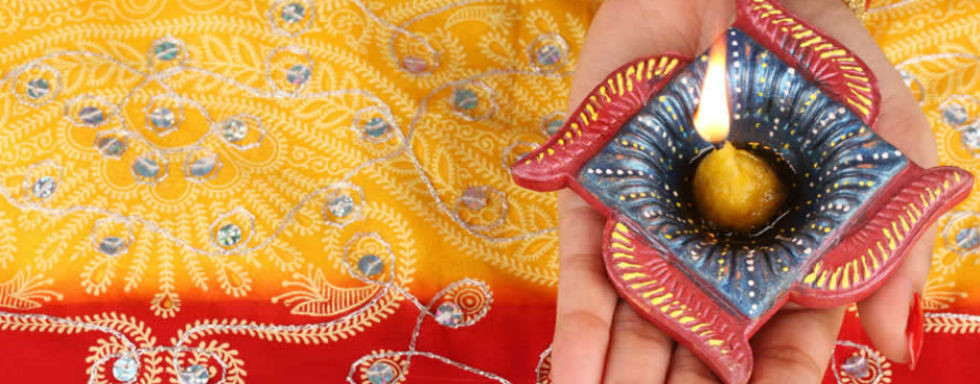November 2007
10 posts

Raksha Bandhan (the bond of protection in Hindi) is a Hindu festival, which celebrates the relationship between brothers and sisters. It is celebrated on the full moon of the month of Shraavana.
The festival is marked by the tying of a rakhi, or holy thread by the sister on the wrist of her brother. The brother in return offers a gift to his sister and vows to look after her. The brother and sister traditionally feed each other sweets. It is not necessary that the rakhi can be given only to a brother by birth; any male can be "adopted" as a brother by tying a rakhi on the person, that is "blood brothers and sisters", whether they are cousins or a good friend. Indian history is replete with women asking for protection, through rakhi, from men who were neither their brothers, nor Hindus themselves. Rani Karnavati of Chittor sent a rakhi to the Mughal Emperor Humayun when she was threatened by Bahadur Shah of Mewar. Humayun abandoned an ongoing military campaign to ride to her rescue.
A sample of rakhis, tied by sisters on the wrists of brothers in celebration of Raksha Bandhan
A sample of rakhis, tied by sisters on the wrists of brothers in celebration of Raksha Bandhan
The rakhi may also be tied on other special occasions to show solidarity and kinship (not necessarily only among brothers and sisters), as was done during the Indian independence movement.
The origin of the festival is mostly attributed to one of following mythological incidents:
1. Indra's fight with Vritra - Indra, the king of devtas (gods), had lost his kingdom to the asura (demon) Vritra. At the behest of his Guru Brihaspati, Indra's wife Sachi[citation needed] tied a thread around her husband's wrist to ensure his victory in the upcoming duel.
2. Draupadi and Krishna during the Rajsuya yagya - After Shishupal's death, Krishna was left with a bleeding finger. Draupadi, the wife of the Pandavas, had torn a strip of silk off her sari and tied it around Krishna's wrist to stop the flow of blood. Touched by her concern, Krishna had declared himself bound to her by her love. He further promised to repay the debt many fold. Many years later when Draupudi was about to be shamed by being disrobed in front of the whole court by her evil brother-in-law Duryodhana, she called on Krishna to help her, and he did by divinely elongating her sari so it could not be removed.
Krishna Janmashtami (Devanagari कृष्ण जन्माष्टमी) , also known as "Krishnashtami","Saatam Aatham" ,"Gokulashtami", "Ashtami Rohini", "Srikrishna Jayanti", "Sree Jayanthi" or sometimes merely as "Janmashtami", is a Hindu festival celebrating the birth of Krishna, the eighth avatar (incarnation) of Vishnu.
Krishna Janmashtami is observed on the eighth day of the dark half (Krishna Paksha) of the month of Shraavana in the Hindu calendar, when the Rohini Nakshatram is ascendent. The Hindu calendar being lunar, these two events [the day being the eighth of the waning moon (Krishna-paksha Ashtami) and the Rohini Nakshatram being ascendent] may overlap for only a few hours. In such an event, the festival may be celebrated on different (but successive) days by different people, depending on their local or family traditions.
The festival falls sometime in the months of August/September of the Gregorian calendar.
Holi (Hindi: होली) or Phagwah (Bhojpuri) is a popular, Hindu spring festival, observed in North India and Nepal, also called the Festival of Colours. Last about five days. In West Bengal, it is known as Dolyatra (Doljatra) or Boshonto Utshob ("spring festival"). On the first day, bonfires are lit at night to signify burning Holika.
On the second day, known as Dhulandi, people spend the day throwing coloured powder and water at each other. The spring season, during which the weather changes, is believed to cause viral fever and cold. Thus, the playful throwing of the coloured powders has a medicinal significance: the colours are traditionally made of Neem, Kumkum, Haldi, Bilva, and other medicinal herbs prescribed by Āyurvedic doctors. A special drink called thandai is prepared, sometimes containing bhang (Cannabis sativa). People invite each other to their houses for feasts and celebrations later in the evening.
Rangapanchami occurs a few days later on a Panchami (fifth day of the full moon), marking the end of festivities involving colours.
Although a Hindu celebration, other religions in India celebrate it as well. In fact, some of the best Holi celebrations are said to happen in Punjab, where Hindus and Sikhs celebrate together. This celebration in Punjab typically involves Dholi's and other musical instruments as kids and adults celebrate.
Holi takes place over two days in the later part of February or early March. As per the Hindu calendar, it falls on the Phalgun Purnima (or Pooranmashi, Full Moon). (In 2007, Holi was celebrated on 3 March, the burning of Holika was on 4 March and the Dhulendi on 5 March.)
